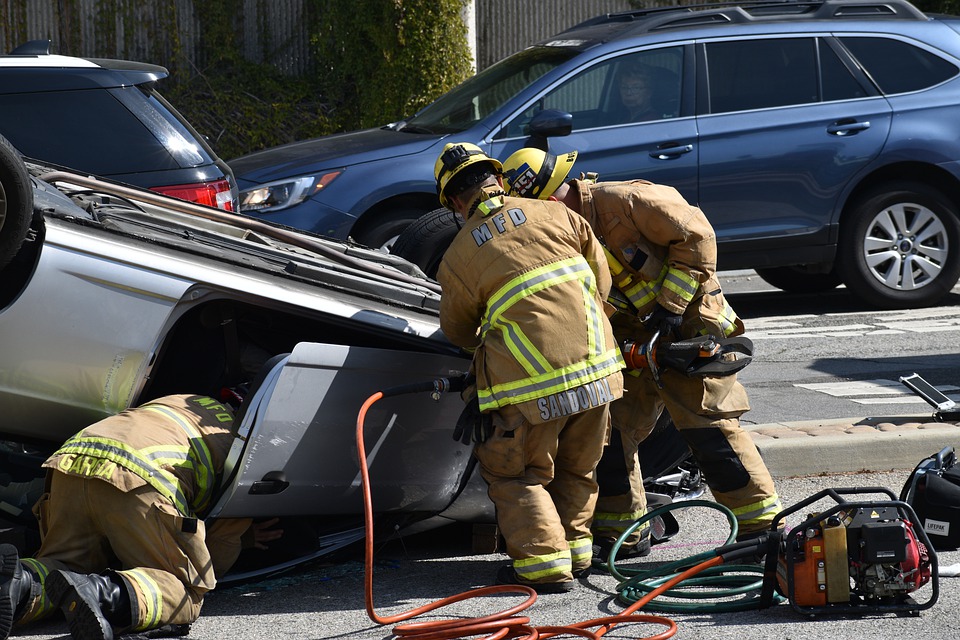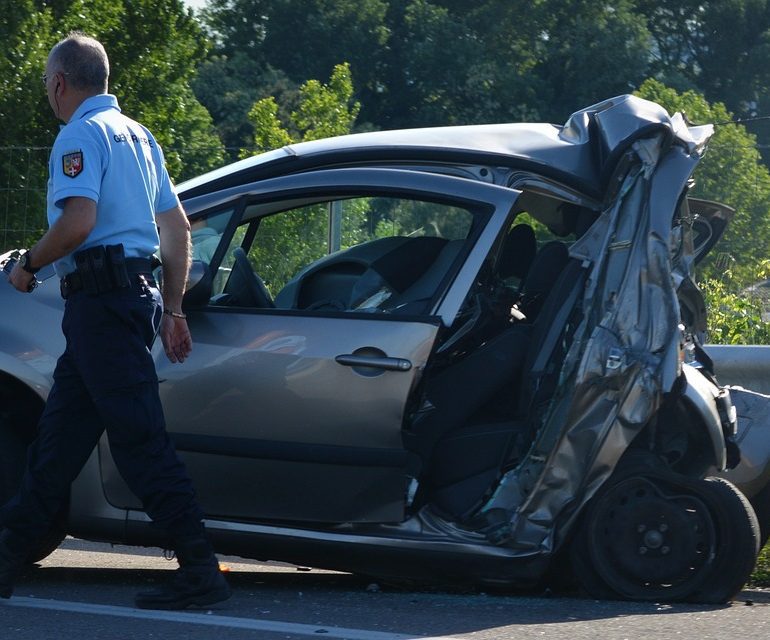There is a fairly infamous saying about speeding, one that both highlights and makes light of the simple facts of physics: “Speed never killed anyone. It’s the sudden stop when you hit the tree that kills you.” Despite being a little bit of dark comedy, it’s also true. Speed has never killed anyone in and of itself.
That isn’t to say, however, that speed has no part to play in accidents that cause injuries or fatalities. Speed affects multiple parts of driving, each of which can be a contributing factor to the severity of any injuries or accidents.
This is especially true with performance cars, supercars, and now hypercars. These vehicles are capable of speeds that even 10 years ago were thought unreachable. The Bugatti Chiron 300, for example, is able to reach 300 MPH. The Koenigsegg Jesko 500 is another, designed to go over 500 KPH (310 MPH). We are getting to a time in automotive history where the cars are starting to be able to go at speeds that the common driver may not be able to control.
What Role Does Speed Play With Respect to the Severity of an Injury in an Auto Accident?

To first understand how speed can injure, we have to define exactly what speed does to a large piece of plastic and metal with a sentient watery sack of flesh inside of it. When you accelerate, you are combating inertia to obtain velocity. You and the vehicle move together, as you are supported by a full back seat, which pushes you at the rate of acceleration.
Now, when you’re going 30 MPH or so, you are covering 44 feet a second. In case that doesn’t sound that bad, take into account that the average American small car is only about 14 to 18 feet long. You are literally covering 2 to 3 car lengths per second, which is why during driver’s ed, the 2 second rule for following the car ahead of you is emphasized.
Now double that to 60 MPH. 88 feet per second. Now accelerate past the national limit and hit 90 MPH. 132 feet per second. It’s an exponential amount of inertia and distance covered that continues to build, and that speed is transferred into your body.
So what role does speed play in severity? Assume that you come around a bend and see traffic at a dead stop about 100 feet in front of you. At 30 MPH you can hit the brakes, engage the ABS system, and will more than likely be thrown forwards into your seatbelt but be able to stop in time. All you’ll get then is possibly a bruise, maybe a sore collarbone.
At 60 MPH, no matter how fast you react or how hard you brake, unless the brakes are carbon ceramic and the car is superlight carbon fiber, it’s almost inevitable that you will crash into the back of traffic. How much speed is dispersed before impact helps reduce the chance of injury, but if you hit at full speed, expect at least a facefull of airbag and possibly a concussion from your brain sloshing around, hitting the front of your skull from the sudden deceleration, and then smacking the back of your skull as you are recoiled into your seat.
Coming around that corner at 90 MPH is where things can get serious, even deadly. Since you are covering 100 feet in less than a second, probability states that your foot may not even be pressing the brake pedal yet. In this case, crumple zones, seat belts, and airbags can quite literally save your life, although the force of deceleration, countered with the force of the car crumpling until it’s reached its limit before transferring the deceleration to you, can easily be enough to snap bones. Collarbones are common with seatbelts, ankle and lower leg breaks are also common due to bracing or pushing against the brake pedal or floor.
The force of the crash can cause your brain to hit your skull so hard you are rendered unconscious, as well as your internal organs can be decelerated so violently that they can tear off their muscular and skeletal mount points, and even tear open vital blood vessels. If you manage to tear your aorta somehow, there is little to no chance of survival. Not to be dramatic, but the faster you go, and the more sudden the stop, the higher the chance of death or permanent injury is.
Are Some Cars More Likely to Result in Injury Than Others?

In a word, yes. The fact of the matter is that the shorter the car is, the smaller its energy dissipation via crumple zones is, and unless there is a safety cell and energy transfer design in the cabin area, the more force is transmitted to the driver.
In order of most to least severe, microcars like the Smart brand are the most likely to result in injuries, as there quite literally is no crumple zone, and the cars rely on energy dispersion around the vehicle to bleed off as much force as possible. Small four door hatchbacks and small family sedans are the next most severe, again because of the forces involved not having much area to disperse. Ford, GM, Fiat, BMW, and Porsche all have worked around this by making their cabins very strong and allowing the deceleration force to pass around the car, crumpling the roof and side panels, without affecting the actual cabin structure and safety cell.
Next most severe are actually CUVs and SUVs. This is not because of them not having a large crumple zone, but because they have a tendency to flip if they cannot dissipate their speed before the vehicle goes sideways. You will often find in crash videos where an SUV is struck in any way other than head on or tail on, the CUV/SUV will tip up on two wheels, and if there is enough inertia, roll over. These rollover accidents do not so much disperse the inertia as allow it to cycle about the vehicle, and as seats are often not bolstered or protected on their sides, the humans inside might fling about in their seatbelts, hitting their heads on door jambs, their arms potentially flying out an open window to be crushed by the vehicle as it rolls.
The least severe in terms of injury are heavy duty trucks, pickups, and large commercial vehicles. With these vehicles, it is mostly weight that reduces the chance of injury, as they are often several tons compared to a small sedan that might be 2,400 lbs in a generous world. Basically, it has way more inertia than whatever it hits, so unless it’s a solidly built brick wall, whatever it hits is going to take the brunt of the impact.
What Steps Can Someone Take to Reduce Their Risk of Serious Injury?

In all honesty, drive within your limits. Something else to consider is that, according to the injury lawyers at Batson Nolan, your insurance company may void your claim or fight to prevent payout if excessive speed is found to be a factor, even if you are ruled not at fault.
It is quite concerning how many accidents occur in our modern times from people being distracted from the road. Smartphones are the #1 distraction, with many fatal accidents being caused by texting, recording a video or taking a selfie, or simply speaking on the phone without using a hands-free device, which is basically unacceptable in 2021 as most cars in the past decade have some form of bluetooth hands-free connectivity. The better option is to put the phone in your pocket or center console, on silent mode, and have your voicemail recording say something along the lines of “Hey, I can’t come to the phone right now because I’m either busy or driving…”
Road rage is another contributing factor to accidents. It is far too common for someone to feel cut off, even if they were not, and to fly into a rage that causes them to speed up and chase down the “offender.” Sometimes, they are so angry that they want to physically hit the other person’s vehicle with their own, causing a motor vehicle accident where speeding could very well be involved. Honestly, before boiling, take a few deep breaths. By the time you’ve done that, you’ll probably have realized that the person that cut you off may not have seen you, and is it really worth potentially dying over?
As well, drive the speed limit. Speed limits are there for a purpose, not just a suggestion. On long, straight freeways, you’ll often find speed limits around 70 MPH. This is because you can see well ahead what’s happening on the road, and it is expected you’ll leave the 2 seconds between cars as taught in driver’s ed. Notice, however, that off-ramps from the freeway often have a speed limit way below 70 MPH. This is because unless you have the world’s stickiest tires, going around that bend at 70 MPH will result in you being flung off the road due to loss of traction.
And if you are going to do the speed limit, while it’s not effectively a law on the road, don’t take the left lane. Let those who want to speed risk themselves in the HOV or left lane. Stay safe in the middle or right lanes. The common guidance is “slower traffic keep right,” and with how impatient some American drivers get, driving the speed limit can sometimes be seen as driving slowly.
So, in sum: Don’t be distracted, focus on the job of driving above all else. Let go of rage, realize that the “offense” is really not worth being injured or killed over. Drive the speed limit, and let those that don’t risk themselves at their own peril in the left lane of the freeway. Always wear a seatbelt. Drive to survive, not to get there quickest.
And if you are lucky enough to own a supercar or hypercar, realize as well that while they are performance cars, you could damage or destroy that car by being too exuberant with your speed. They’re beautiful vehicles, drive responsibly and let yourself, and those around you, enjoy them as the rolling pieces of art they are.




